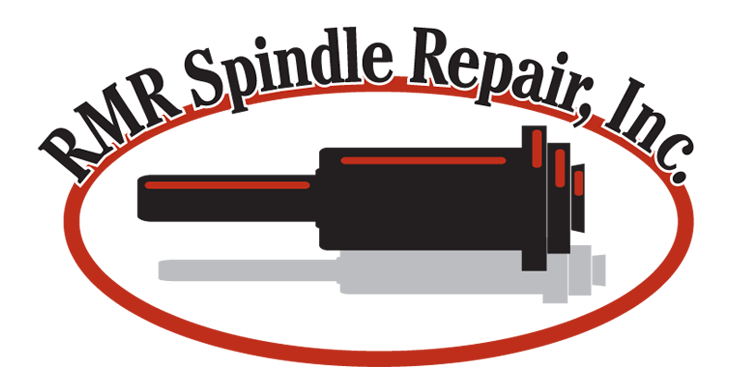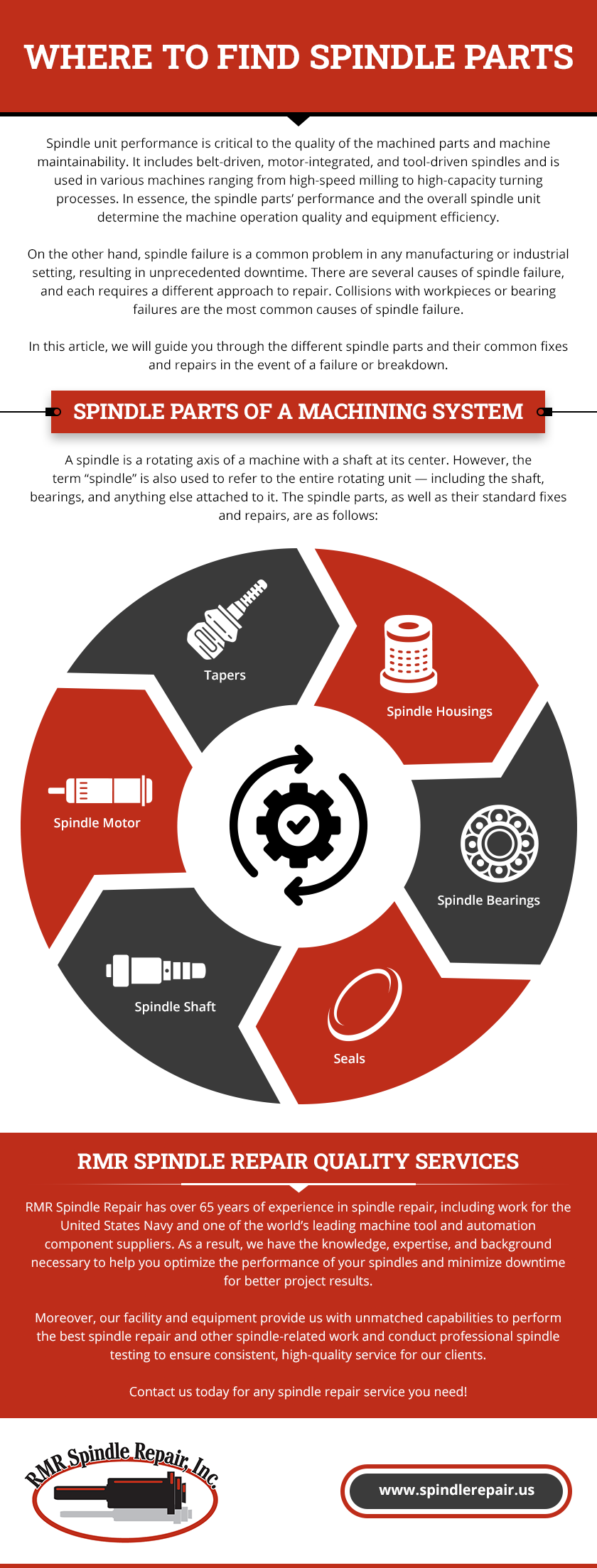Spindle unit performance is critical to the quality of the machined parts and machine maintainability. It includes belt-driven, motor-integrated, and tool-driven spindles and is used in various machines ranging from high-speed milling to high-capacity turning processes. In essence, the spindle parts’ performance and the overall spindle unit determine the machine operation quality and equipment efficiency.
On the other hand, spindle failure is a common problem in any manufacturing or industrial setting, resulting in unprecedented downtime. There are several causes of spindle failure, and each requires a different approach to repair. Collisions with workpieces or bearing failures are the most common causes of spindle failure.
In this article, we will guide you through the different spindle parts and their common fixes and repairs in the event of a failure or breakdown.
Spindle Parts of a Machining System
A spindle is a rotating axis of a machine with a shaft at its center. However, the term “spindle” is also used to refer to the entire rotating unit — including the shaft, bearings, and anything else attached to it. The spindle parts, as well as their standard fixes and repairs, are as follows:
Spindle Housings
A housing must hold the spindle shaft and motor in place. It could be built into a machine tool or a cartridge housing and mounted with a block, foot, or flange. Many high-speed spindle models use cartridge-type housings because they are the easiest to support and because high-speed tolerances are easier to achieve when the housing is manufactured as a cylinder.
This spindle part’s core purpose is to enclose the bearings. Therefore, it must precisely sustain and pinpoint the bearings while providing utilities to the spindle system. It is also necessary for the housing to be solid and stiff because it transfers all forces from the spindle to the machine tool.
The most common problem with spindle housings is a lack of bearing-housing clearance at the rear of the unit, which can lead to excessive bearing preload and seizure. Housing bores or other defects on diameters can be corrected with chrome plating and grinding, which are offered by RMR Spindle Repair.
Spindle Bearings
Any spindle design would be incomplete without a bearing system. The spindle must transfer torque and power to the cutting tool and have a reasonable loading and life. The bearing type must meet these specifications, or the spindle will not operate effectively.
There are various bearing types used with machine tool spindles. Some of them include the following:
- Angular contact bearings
- Ceramic hybrid bearings
- Air bearings
- Roller bearings
- Tapered roller bearings
- Hydrostatic bearings
- Magnetic bearings
Bearing failures are caused mainly by excessive preload (negative radial clearance), which may result in a high-bearing running temperature and seizure. Another failure is the angular contact bearings tolerance mismatch in which angular contact bearings with standard outer diameter (OD) tolerance may fail.
These can be repaired by replacing the bearings. It would also be beneficial if the spindles were reassembled with precision bearings identical to the original bearings installed.
Seals
Spindle designers use seals to prevent external contamination from entering the spindle unit. These seals are necessary because high-precision bearings are highly susceptible to contamination — from chips, dirt, dust, coolant, and other foreign material on the surfaces – usually causing premature failures.
When a seal fails, the most common solution is to replace it with another. Furthermore, protecting spindles in high-contamination areas necessitates a thorough examination of the spindle’s existing seals, with the ultimate goal of preventing contaminants from entering and destroying the bearings.
Spindle Shaft
A standard belt-driven spindle setup consists of the spindle shaft, which is supported by the spindle housing and is held in place by a bearing system. In addition, the tooling system — tool taper, drawbar mechanism, and tool release system — is integrated into the spindle shaft.
The most common failure is shaft misalignment, usually caused by premature bearing, seal or coupling failure, excessive vibration, high housing temperature near the bearings, and excess oil leakage in the bearing seals. You can avoid these by regularly checking the shaft straightness or alignment relative to the tool side and avoiding excessive belt tension on belt-driven spindles.
If a total shaft failure occurs, RMR Spindle Repair is more than capable of cleaning, repairing, and — if necessary — chrome-plating your spindle shaft.
Spindle Motor
The spindle motor is mounted independently of the shaft. As a result, it is frequently possible to use a huge motor. A motor, especially one with a large diameter, can provide extremely high torque and power for spindle use. However, this is more difficult because available space is always limited in an integral motor spindle design. Typically, the rotor is attached to the spindle shaft via adhesive or thermal clamping, whereas the stator is the winding around which the rotor revolves.
Too high winding temperature is a common stator fault caused by too high voltage, a broken rotor cage bar, or water leakage from the water jacket. In the occurrence of a stator fault, RMR Spindle Repair provides stator cleaning, baking, testing, and rewinding.
Tapers
As a machining operation, taper turning is the gradual reduction in diameter from one part of a cylindrical workpiece to another. A workpiece has an external taper if tapered on the outside; an internal taper if tapered on the inside.
A damaged taper, frequently resulting from simple wear and tear, can lead to complex mechanical problems. Straight marks on the taper indicating fretting are common signs of deterioration. Natural deterioration can lead to many more significant machining issues that you must address as soon as possible because the taper is subjected to high-speed conditions and frequent tool changes. Chrome plating is the most common solution for any taper fault.
RMR Spindle Repair Quality Services
Manufacturing and production downtime caused by spindle failure is frustrating, costly, and detrimental to any project. However, you can prevent this by partnering with a reputable and reliable repair and service provider.
RMR Spindle Repair has over 45 years of experience in spindle repair, including work for the United States Navy and one of the world’s leading machine tool and automation component suppliers. As a result, we have the knowledge, expertise, and background necessary to help you optimize the performance of your spindles and minimize downtime for better project results.
Moreover, our facility and equipment provide us with unmatched capabilities to perform the best spindle repair and other spindle-related work and conduct professional spindle testing to ensure consistent, high-quality service for our clients.
Contact us today for any spindle repair service you need!


Recent Comments